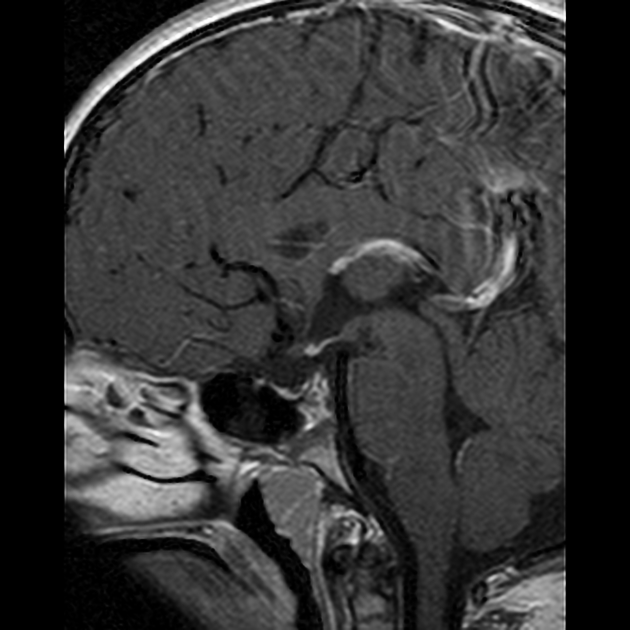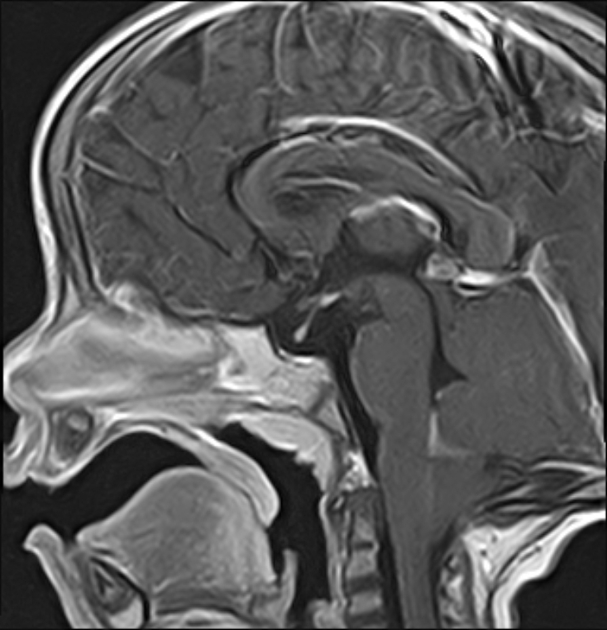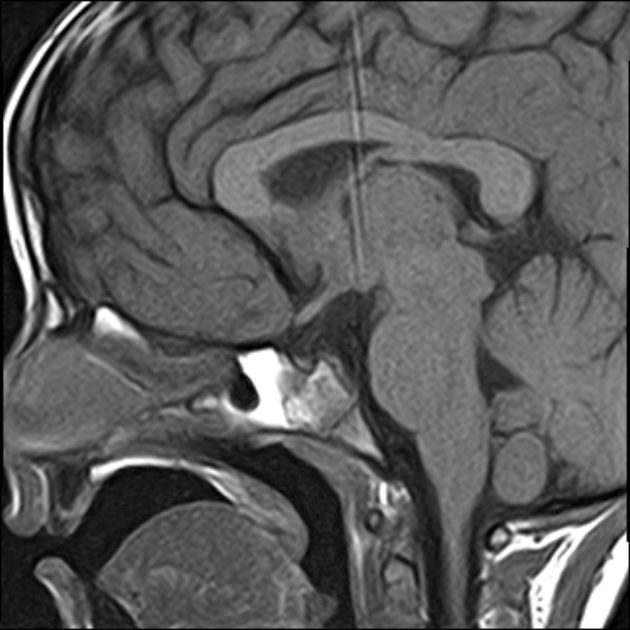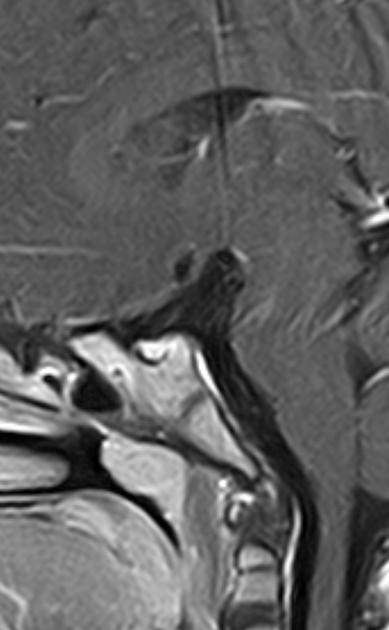Pituitary stalk interruption syndrome, also known as pituitary stalk transection syndrome, is a syndrome characterized by an absent or hypoplastic anterior pituitary gland, thin or absent infundibulum, and ectopic posterior pituitary location.
On this page:
Terminology
The term pituitary stalk interruption syndrome should not be used interchangeably with ectopic posterior pituitary, which is only one of the features of pituitary stalk interruption syndrome.
Epidemiology
Pituitary stalk interruption syndrome is rare, with an estimated incidence of 0.5 in 100,000 births 5.
Clinical presentation
Patients with pituitary stalk interruption usually present early in life, either in the first decade of life with a deficiency of growth hormones resulting in short stature or during puberty due to a lack of developing secondary sexual characteristics 1,6. This may progress to multiple pituitary hormone deficiencies with the eventual development of panhypopituitarism with preservation of posterior pituitary function 2,4.
The combination of hyperprolactinemia and hypothyroidism is known as Pickardt syndrome 4.
In addition to endocrinological manifestations, there appears to be an increased incidence of breech presentation and difficult delivery 4. A number of additional features may be encountered later in childhood, including learning difficulties and seizures 4,7.
Pathology
Various hypotheses have been proposed to explain the syndrome such as defective migration of the pituitary gland during intrauterine life or ischemia with subsequent reorganization of the infundibular axons and development of an ectopic posterior pituitary 1.
Radiographic features
MRI
MRI is required for the diagnosis and demonstrates 4:
absent/hypoplastic anterior pituitary gland
thin or absent infundibulum
Additional features include optic nerve hypoplasia 7.
Treatment and prognosis
Treatment consists of hormonal replacement 3.



















 Unable to process the form. Check for errors and try again.
Unable to process the form. Check for errors and try again.